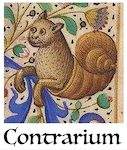A short note on bats and "pipistrellos"
Why some animals have funny names and others don’t
The other day my mother went to the theatre and, during the play, a bat appeared out of nowhere and started flying all over people’s heads, distracting both the cast and the audience. The play had to be interrupted for several minutes, until eventually the animal flew away — or so they said. In any case, it didn’t come back.
This reminded me of the short story “Il Pipistrello” (The Bat), by Luigi Pirandello, which I had read a while ago, and which concerns a bat that constantly interrupts the performance of a play until it causes changes in the action of the play itself — a common theme in Pirandello is the interplay between fiction and reality and how both influence each other.
I don’t know how common is the appearance of bats during plays, but I suppose that the high ceilings of theatres would provide an ideal environment for such animals, just as old castles, or churches and cemeteries. It would be interesting to consider how common a phenomenon that is.
But I was really thinking about that funny-sounding word, “pipistrello”. Some animals have similar names in multiple languages. Lion, león, leão, leone, léon, lion, Löwe. Zebra, zebra, zebra, zebra, zebra. But that’s not the case with “bat”. In English, the word is not very fancy and I suppose it comes simply from the movement of the wings (from the verb to bat, originally from French battre). In German it’s fliedermaus, or flying mouse, and in French it is chauve-souris, or bald mouse. In Spanish, the word used is the scary-sounding “murciélago”, which really simply means “blind mouse”. It comes from an old Spanish word for mouse, “mur”. The same word and meaning gave origin to the Portuguese version, “morcego”.
But in Italian, the word is the funny-sounding pipistrello. Dante, in the Divine Comedy (Inferno, 34), calls it “vispistrello”, and supposedly the original word is vispertilio, which simply means “nocturnal” (from “vesper”, Latin for “evening”). With changes in the pronunciation across centuries, it eventually became “pipistrello”.
How animals are named in different countries is interesting. In some cases, the name comes straight from Latin and is similar in many languages. In other cases, the name comes from a local language which is then adapted worldwide. There is a known legend about the origin of the name “kangaroo”: supposedly, the explorer James Cook asked the natives what was the name of that curious animal, and they replied, “Kan garoo” — Cook took it to be the name of the animal, but it really meant “I don’t know.”
But back to bats: most people, I suppose, dislike them, as they are associated with vampires and considered transmitters of diseases. They were even blamed for Covid at the beginning — in some versions, from a Chinese woman who ate a badly cooked bat soup — but later the blame was passed to the more cute pangolins, and, even more recently, to the not so cute American bio-labs in China. Who knows. In any case, the image of bats hasn’t improved much in recent years, despite Batman’s best efforts.
As for me, I tend to sympathize with them. There were many bats living in the roof of our old childhood house, and they flied all over the garden at night, but they never bothered me. Onły once one of them entered the living room by mistake, and was quickly chased away by my mother with a broom. I now wonder, perhaps the one recently bothering her during a theatre play was a revengeful descendant of that chased pipistrello?

